Dermal niche signaling and epidermal stem cells
January 2019
in “Advances in stem cells and their niches”
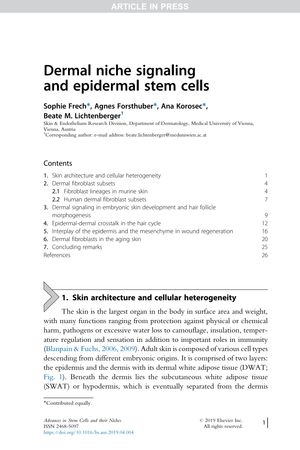
TLDR Skin health and repair depend on the signals between skin stem cells and their surrounding cells.
The document from 2019 explores the intricate relationship between dermal niche signaling and epidermal stem cells, particularly focusing on skin architecture, cellular diversity, and the role of dermal fibroblasts in skin regeneration and hair follicle development. It reveals that the skin consists of the epidermis and dermis, with the latter containing diverse fibroblast lineages originating from a common progenitor and committing to specific lineages during embryogenesis. These fibroblasts are crucial for skin development, homeostasis, and repair, and they exhibit distinct gene expression profiles based on their anatomical origins. The study identifies markers for different fibroblast subsets and discusses the importance of signaling pathways like WNT/β-catenin, TGF-β, BMP, FGFs, SHH, and Notch in embryonic skin development and hair follicle morphogenesis. It also highlights the role of fibroblasts in hair cycle regulation and wound healing, noting that different fibroblast populations respond to epidermal stem cell signals and that fibroblasts and adipocytes are essential for tissue regeneration. Additionally, the document discusses the impact of aging and environmental factors such as UV radiation on fibroblast function, which leads to reduced collagen synthesis, increased oxidative stress, and potential contributions to age-related hair loss. The conclusion emphasizes the significance of understanding the reciprocal signaling between epidermal stem cells and their microenvironment for advancements in regenerative medicine.
View this study on doi.org →
Cited in this study

research Hedgehog stimulates hair follicle neogenesis by creating inductive dermis during murine skin wound healing
The Sonic hedgehog pathway is crucial for new hair growth during mouse skin healing.
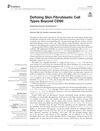
research Defining Skin Fibroblastic Cell Types Beyond CD90
The conclusion is that CD90 is not a specific marker for fibroblast subtypes and better methods are needed to identify them.
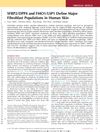
research SFRP2/DPP4 and FMO1/LSP1 Define Major Fibroblast Populations in Human Skin
Two main types of fibroblasts with unique functions and additional subtypes were identified in human skin.

research Stretching the limits: from homeostasis to stem cell plasticity in wound healing and cancer
Stem cell plasticity is crucial for wound healing but can also contribute to cancer development.

research Targeting of CXXC5 by a Competing Peptide Stimulates Hair Regrowth and Wound-Induced Hair Neogenesis
Blocking a protein called CXXC5 with a specific peptide can stimulate hair regrowth and new hair growth in wounds.
research Wounding induces dedifferentiation of epidermal Gata6+ cells and acquisition of stem cell properties

research Multifaceted role of hair follicle dermal cells in bioengineered skins
Researchers evaluated the potential of human hair follicle dermal cells as an alternative cell source for the dermal component of bioengineered skin constructs. They compared primary interfollicular dermal fibroblasts, hair follicle dermal papilla cells, and hair follicle dermal sheath cells in both in vitro and in vivo models. All cell types supported epithelial cell growth, but hair follicle dermal sheath cells were superior in establishing a basal lamina. The study concluded that human hair follicle dermal cells could effectively replace interfollicular fibroblasts in engineered skin constructs.

research Regeneration of fat cells from myofibroblasts during wound healing
Some wound-healing cells can turn into fat cells around new hair growth in mice.
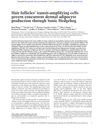
research Hair follicles’ transit-amplifying cells govern concurrent dermal adipocyte production through Sonic Hedgehog
Cells in hair follicles help create fat cells in the skin by releasing a protein called Sonic Hedgehog.

research Activating β-catenin signaling in CD133-positive dermal papilla cells increases hair inductivity
Boosting β-catenin signaling in certain skin cells can enhance hair growth.

research Scarless wound healing: finding the right cells and signals
The right cells and signals can potentially lead to scarless wound healing, with a mix of natural and external wound healing controllers possibly being the best way to achieve this.

research Epithelial Skin Biology
The document concludes that while significant progress has been made in understanding skin biology and stem cells, more research is needed to fully understand their interactions with their environment.

research Fate of Prominin-1 Expressing Dermal Papilla Cells during Homeostasis, Wound Healing and Wnt Activation
Prominin-1 expressing cells in the dermal papilla help regulate hair follicle size and communication but don't aid in skin repair.
research An Integrated Transcriptome Atlas of Embryonic Hair Follicle Progenitors, Their Niche, and the Developing Skin
The study identified unique genes in hair follicle cells and their environment, suggesting these genes help organize cells for hair growth.
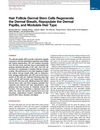
research Hair Follicle Dermal Stem Cells Regenerate the Dermal Sheath, Repopulate the Dermal Papilla, and Modulate Hair Type
Hair follicle dermal stem cells are key for regenerating parts of the hair follicle and determining hair type.
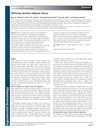
research Defining dermal adipose tissue
Skin fat cells help with skin balance, hair growth, and healing wounds.

research Emerging interactions between skin stem cells and their niches
Skin stem cells interacting with their environment is crucial for maintaining and regenerating skin and hair, and understanding this can help develop new treatments for skin and hair disorders.
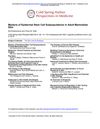
research Markers of Epidermal Stem Cell Subpopulations in Adult Mammalian Skin
The document concludes that adult mammalian skin contains multiple stem cell populations with specific markers, important for understanding skin regeneration and related conditions.

research Adipocytes in Skin Health and Disease
Fat cells are important for healthy skin, hair growth, and healing, and changes in these cells can affect skin conditions and aging.

research Dissociated Human Dermal Papilla Cells Induce Hair Follicle Neogenesis in Grafted Dermal–Epidermal Composites
Human skin cells can create new hair follicles when transplanted into mice.
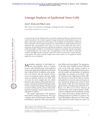
research Lineage Analysis of Epidermal Stem Cells
Skin stem cells maintain and repair the outer layer of skin, with some types being essential for healing wounds.

research Microenvironmental reprogramming by three-dimensional culture enables dermal papilla cells to induce de novo human hair-follicle growth
Growing human skin cells in a 3D environment can stimulate new hair growth.
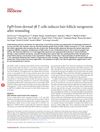
research Fgf9 from dermal γδ T cells induces hair follicle neogenesis after wounding
A protein from certain immune cells is key for new hair growth after skin injury in mice.
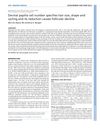
research Dermal papilla cell number specifies hair size, shape and cycling and its reduction causes follicular decline
More dermal papilla cells in hair follicles lead to larger, healthier hair, while fewer cells cause hair thinning and loss.
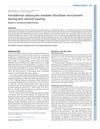
research Intradermal adipocytes mediate fibroblast recruitment during skin wound healing
Fat cells help recruit healing cells and build skin structure during wound healing.

research Mesenchymal–epithelial interactions during hair follicle morphogenesis and cycling
The conclusion is that certain cell interactions and signals are crucial for hair growth and regeneration.

research Development and homeostasis of the sebaceous gland
The document concludes that understanding the sebaceous gland's development and function is key to addressing related skin diseases and aging effects.
research Age-associated inflammation inhibits epidermal stem cell function

research Live imaging of stem cell and progeny behaviour in physiological hair-follicle regeneration
Hair regeneration needs dynamic cell behavior and mesenchyme presence for stem cell activation.

research Polyclonal origin and hair induction ability of dermal papillae in neonatal and adult mouse back skin
Dermal papillae cells, important for hair growth, come from multiple cell lines and can be formed by skin cells, regardless of their origin or hair cycle phase. These cells rarely divide, but their ability to shape tissue may contribute to their efficiency in inducing hair growth.

research Dermal β-catenin activity in response to epidermal Wnt ligands is required for fibroblast proliferation and hair follicle initiation
Skin needs dermal β-catenin activity for hair growth and skin cell multiplication.

research Reprogramming adult dermis to a neonatal state through epidermal activation of β-catenin
Activating a protein called β-catenin in adult skin can make it behave like young skin, potentially helping with skin aging and hair loss.

research Adipocyte Lineage Cells Contribute to the Skin Stem Cell Niche to Drive Hair Cycling
Fat-related cells are important for initiating hair growth.
research Clock genes, hair growth and aging
Circadian clock genes are important for hair growth and may affect aging-related hair loss and graying.

research Epidermal homeostasis: a balancing act of stem cells in the skin
Skin stem cells are crucial for maintaining and repairing the skin and hair, using a complex mix of signals to do so.
research An Extended Epidermal Response Heals Cutaneous Wounds in the Absence of a Hair Follicle Stem Cell Contribution
Skin can heal wounds without hair follicle stem cells, but it takes a bit longer.

research Wnt-dependent de novo hair follicle regeneration in adult mouse skin after wounding
Hair follicles can regrow in wounded adult mouse skin using a process like embryo development.
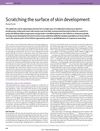
research Scratching the surface of skin development
The document concludes that skin stem cells are important for hair growth and wound healing, and could be used in regenerative medicine.

research NEOGENESIS OF HUMAN HAIR FOLLICLES*
Human hair follicles can grow back.
research Bone morphogenetic protein signaling regulates the size of hair follicles and modulates the expression of cell cycle-associated genes
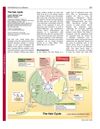
research The hair cycle
The document concludes that the hair cycle is a complex process involving growth, regression, and rest phases, regulated by various molecular signals.
research Analysis of Hair Follicles in Mutant Laboratory Mice
research Molecular Dissection of Mesenchymal–Epithelial Interactions in the Hair Follicle
Understanding gene expression in hair follicles can reveal insights into hair growth and disorders.
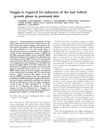
research Noggin is required for induction of the hair follicle growth phase in postnatal skin
Noggin is necessary to start the hair growth phase in skin after birth.